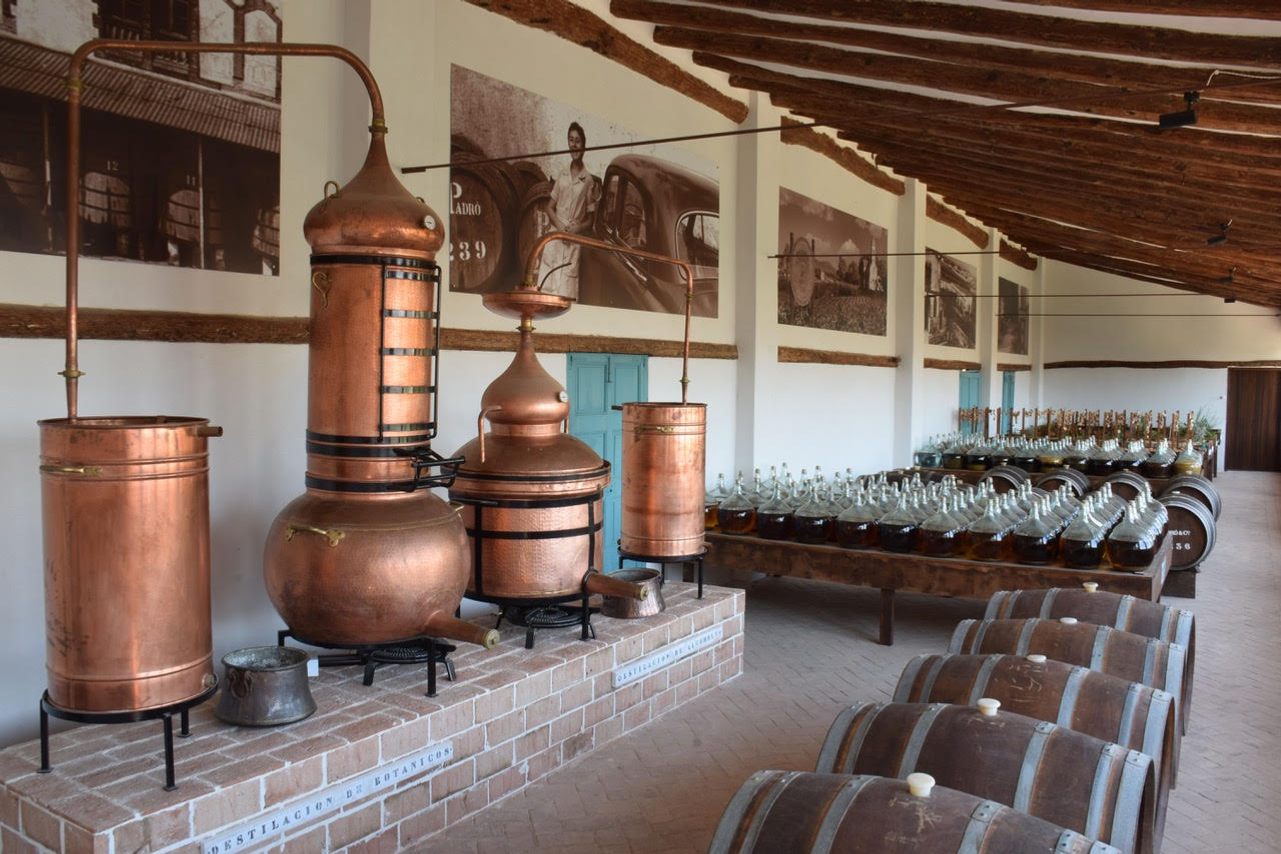
1. Padró & Co Vermouth
Imagine a drink so ingrained in the culture of a place that it has its own dedicated time of the week. In Catalonia, l'hora del vermut (vermouth hour) takes place before lunch on Sundays, when families and friends gather for an aperitiu, accompanied by salty snacks like anchovies, and olives.
The Padró family is one of Spain’s oldest wine and vermouth producers; their origins date back to 1886, when they set up a pressing and distilling operation in the village of Bràfim, near Tarragona. Since then, the Padró name has become synonymous with premium Catalonian vermouth.
Traditionally, the production process is shrouded in secrecy to protect the all-important herb formulas that lend each vermouth its unique flavors. But at the Padró & Co’s visitor center, you can learn how the vermouth is made, while touching, tasting, and smelling the ingredients. Of course, the family specific recipe itself remains guarded like a state secret.
Carrer d’Avall, 17, 43812 Bràfim, Tarragona, Spain
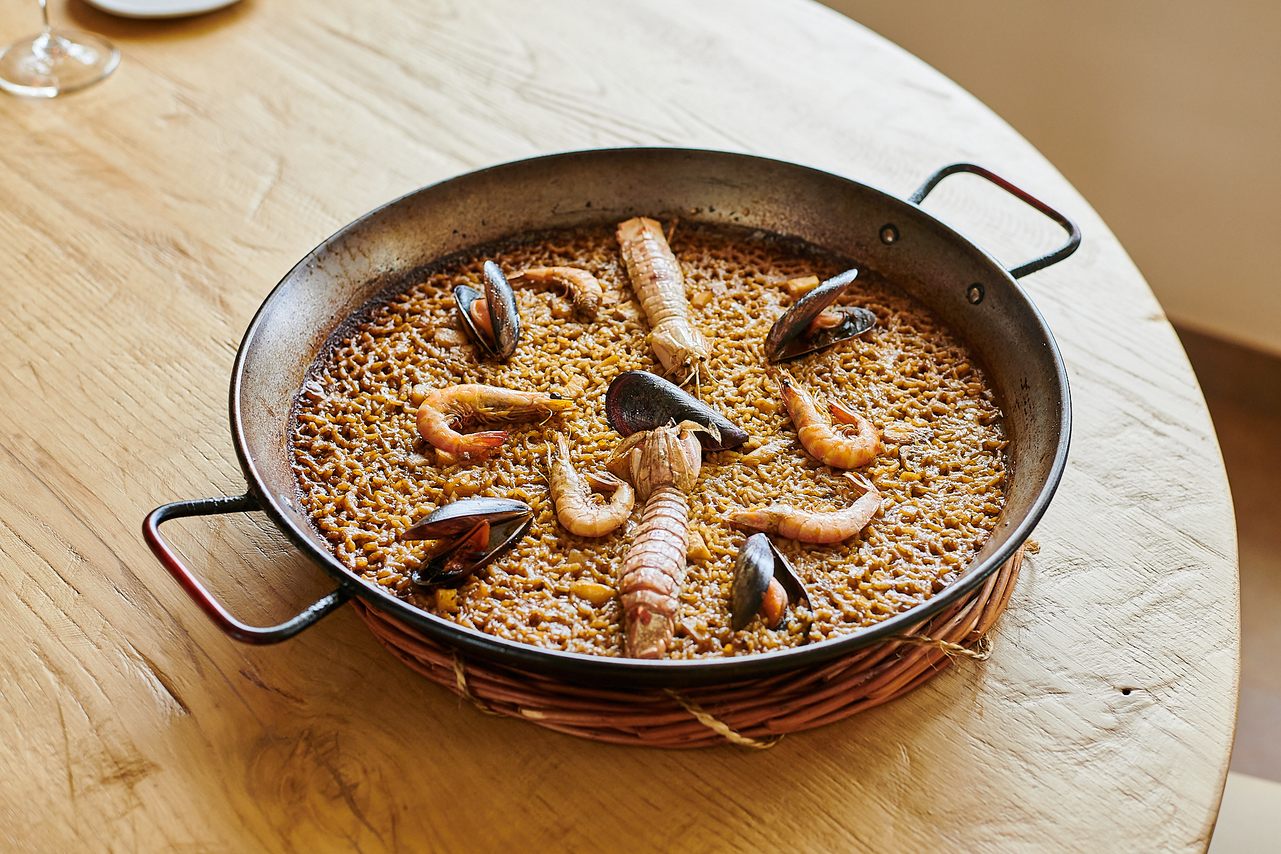
2. L’Algadir del Delta
Southern Catalonia is home to a key component of the paella production chain: marshy wetlands full of pink flamingos.
The Ebre Delta has been producing rice since the 17th century, supplying paellas across Spain with their most essential ingredient. And at L’Algadir del Delta, you’ll find some of the best Catalan paella and other local delicacies like duck, eel, snails, sea cucumber, and artichokes, masterfully prepared by Chef Joan Capilla.
You can try Capilla’s rice at this Michelin Guide-listed restaurant, or learn to make it yourself at one of his cooking workshops. The class begins with a visit to the market, a quintessential part of any Catalan food lover’s morning. After selecting the finest daily ingredients, don your aprons and prepare four of Capilla’s recipes in the L’Algadir kitchen—topped off with wine from the Terra Alta region, just an hour away.
Ronda dels Pins, 27-29, 43549 Poble Nou del Delta, Tarragona, Spain
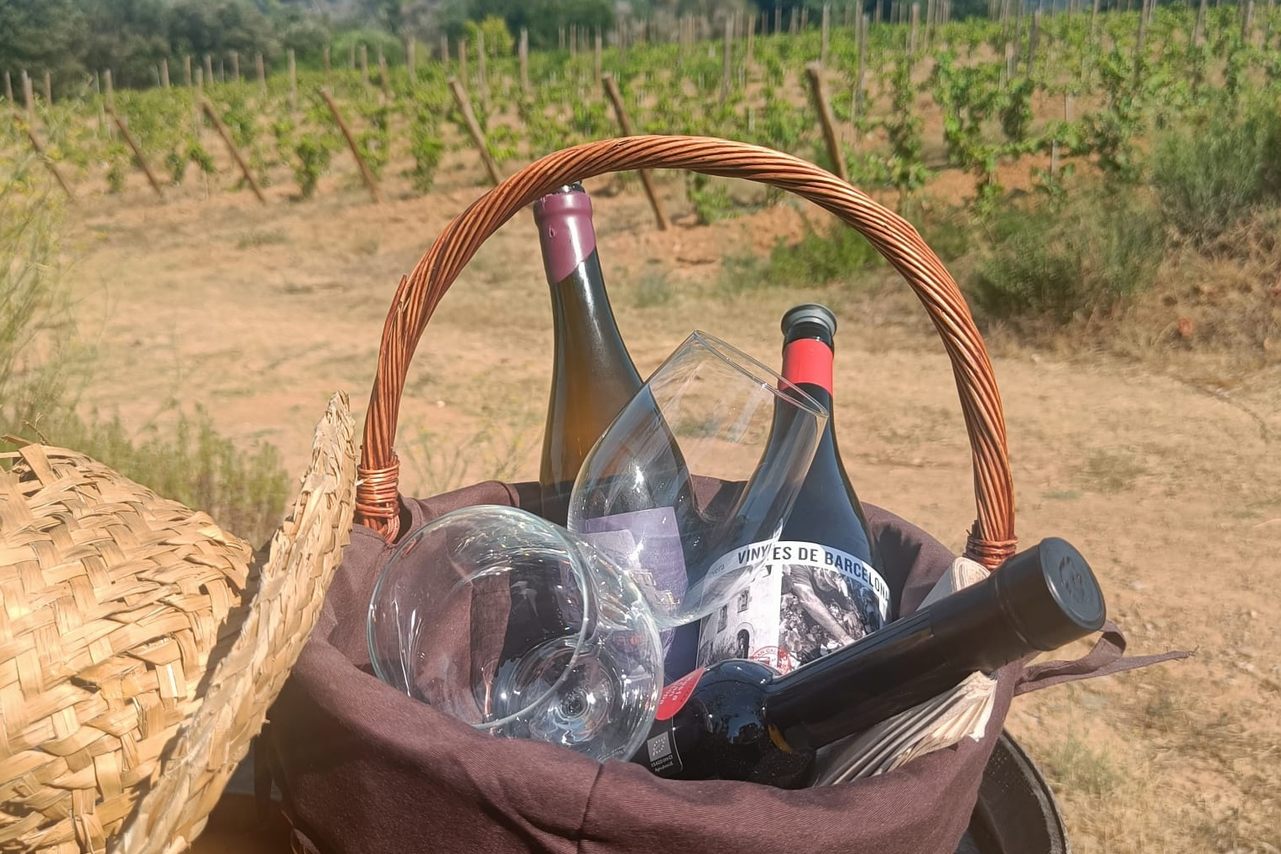
3. Barcelona: Urban Grapes
At Barcelona’s only urban winery, the Can Calopa estate, the wine- and oil-makers at L’Olivera are supporting the revival of peri-urban agriculture.
L’Olivera is nestled in the Collserola Natural Park, just 30 minutes from central Barcelona (though once deep in the Catalan countryside). The area’s first vineyards were established in the 16th century, and workers have long sustained themselves on a local specialty and Catalonia’s heartiest meal, the forquilla breakfast. The forquilla (fork) breakfast, or esmorzar de forquilla, is a robust early-morning meal of offal stew (capipota), slow-cooked pork cheeks, beans with cod, or chickpeas with botifarra sausage, traditionally favored by farmhands and laborers.
You can experience this breakfast of champions yourself during a visit to the winery, though make sure you leave plenty of time to sample the oil and wine made on site. Round it off with a cigaló (coffee with a dash of rum or cognac) and you’ll be out plowing the land in no time.
BV-1468, Km 4, 8, 08017 Barcelona, Spain
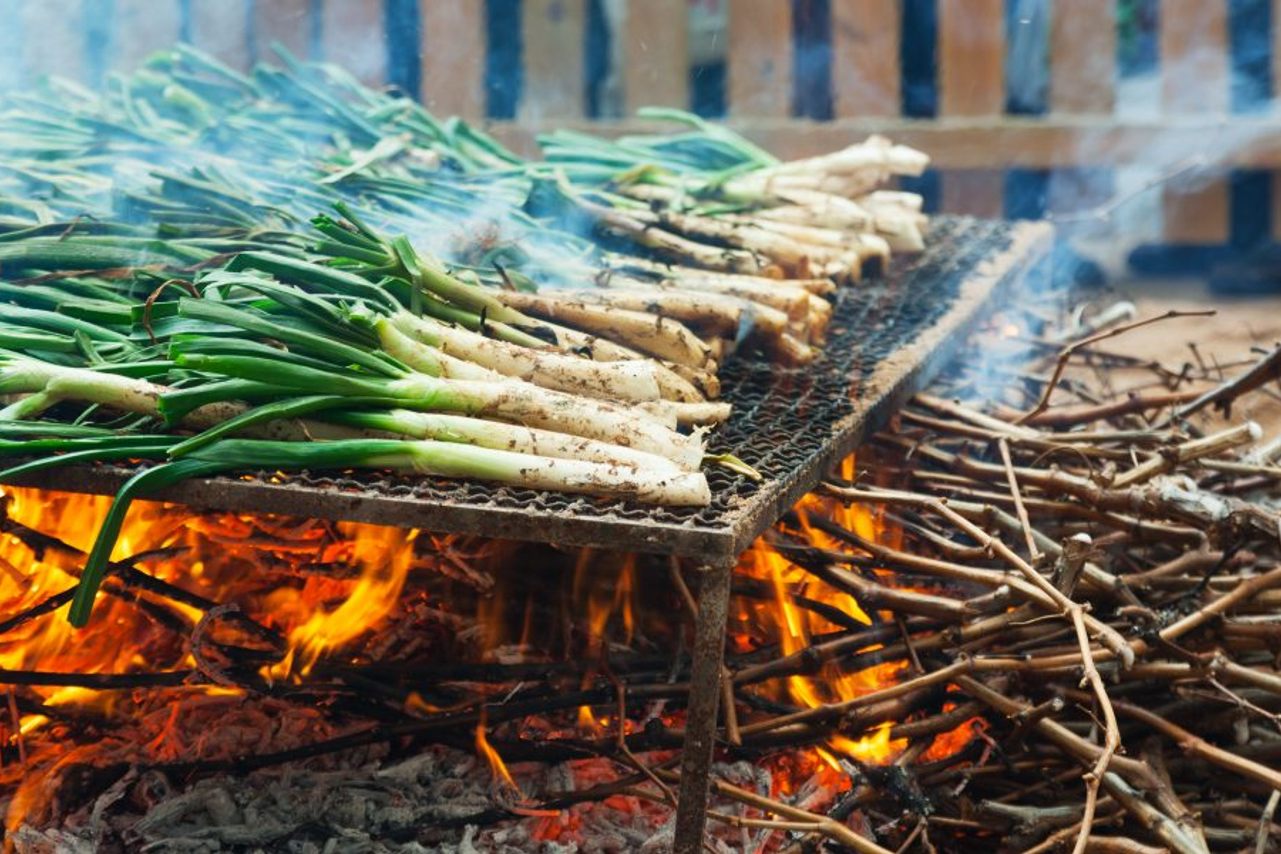
4. Sumarroca Winery
Only in Catalonia could something as simple as an onion grilled over a hot flame become an unmissable annual event. Penedès is one of the areas where you can experience the most epic onion fest of all: the calçotada.
During the winter, you can’t swing a cat in rural Catalonia without bonking a barbecue full of calçots. Not quite a leek and not quite an onion, the calçot is like a big, juicy spring onion in flavor, while closer to a leek in appearance. Harvested in Catalonia from December to April, calçots are blackened on the barbecue, then peeled (a messy business involving plastic gloves and a bib) and dipped in tangy, garlicky Romesco sauce, all before being lowered into one’s mouth.
While many rural restaurants offer calçotades, finding a good one in the city can be a challenge. Sumarroca Winery is not only located conveniently close to Barcelona, but also offers a half-day enogastronomic experience that includes a winery visit, wine tasting, and calçotada showcooking. This culinary affair features 100% local produce and is accompanied by some excellent Sumarroca wine and bubbles from the D.O. Cava and D.O. Penedès designations. You can even jump in and try your hand on the grill—with the calçots and the barbecued meat that follows!
Barrio El Rebato, Carretera de Sant Sadurní a Gelida, km. 15, Barcelona, Spain

5. Cuadrat Valley
What’s the most important ingredient in Catalan food? If your answer is tomatoes, rice, or seafood, you’re not far off. But there is one ultimate ingredient to rule them all: olive oil.
In the land of pa amb tomàquet, or tomato bread, the importance of quality olive oil cannot be overstated. No surprise then that the launch of the year’s oil production is one of the highlights of the calendar. From November to January, Catalonia’s villages and cooperatives celebrate the arrival of what is known as the “new oil”. At Cuadrat Valley, in the verdant inland of Les Garrigues in Terres de Lleida, visitors can sample the new vintage of extra virgin olive oil from AOP Les Garrigues, made from Arbequina olives harvested in the cool month of November. With its notes of almond, artichoke, and banana, this oil can turn any dish into an unforgettable culinary experience. No wonder, then, that it was recently named the best Arbequina oil in the world at the Evooleum Top100.
Ctra. de L'Albagés a Cervià, km 3,500, 41°25’ 51’’ N 0°47’12’’ E, 25155 L'Albagés, Lleida, Spain

6. Kripta Winery
With wine being one of Catalonia’s proudest products, the grape harvest is a key time of celebration. In Penedès, the home of cava—Catalan sparkling wine—September is the most joyous time of the year. A series of harvest-centered wine tourism experiences as part of the Penedès Harvest Fest, organized annually by the Penedès Wine Route and taking place at different wineries along the route.
In a region with a rich winemaking tradition, Kripta is one of the most fascinating wineries to visit. Built in 1970 by legendary Penedès cava-maker Augusti Torelló and his wife Carmen Sibill, its stone cellar is reminiscent of the ancient crypts in Catholic cathedrals—reflected in its name, Kripta, from the Catalan cripta (but spelled like the Ancient Greek). During September, you can visit the winery to learn about the family history, the story of cava, and the harvest traditions, all brought together in a harvest picnic featuring award-winning Kripta cavas paired with local Catalan sausage and cheese. This intimate picnic brunch is designed for no more than a dozen people.
La Serra, s/n, 08770 Sant Sadurní d'Anoia, Barcelona, Spain

7. La Quinta Justa
Catalonia comprises many topographies, from rugged mountains to sandy beaches, not to mention the volcanic landscapes of Montsacopa (and let’s not forget those flamingo-filled wetlands we mentioned earlier). The volcanic soil here is fertile and rich in minerals, lending itself well to raising livestock and growing crops.
The La Garrotxa volcanic region, in addition to being an excellent home to goats and sheep, excels in the production of foods like buckwheat, Santa Pau beans, black turnips, and Vall d’en Bas potatoes. Unique animal products abound, like recuit, a fresh cheese typically made from sheep or goat milk and often enjoyed as a dessert. There’s also serrat, an intense cheese made from raw goat milk, and Piumoc, a cured dry sausage made from pork chops and recuit.
In the mid-1990s, the La Garrotxa region inspired cuina volcànica, or volcanic cuisine, a new culinary movement based around volcanic produce. Sample it at La Quinta Justa in Olot, where you can enjoy a volcanic tasting menu with a wine pairing, or sign up for a volcanic cooking workshop, where you’ll learn recipes celebrating the products of this volcanic land.
Passeig Barcelona, 7, 17800 Olot, Girona, Spain
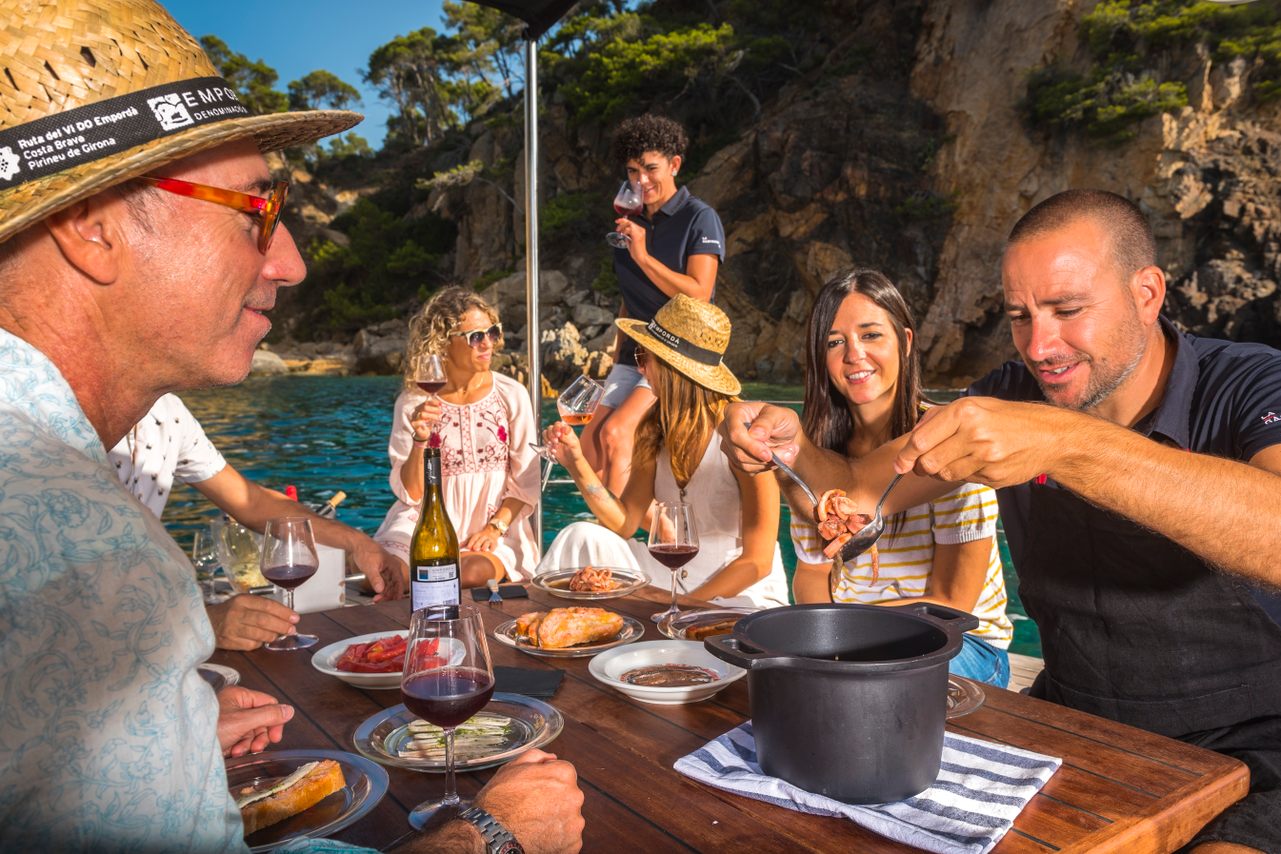
8. La Gastronòmica
“Vaig a plaça!” is how Catalans say, “I’m off to the market!”. And to be fair, that’s usually where they’re headed. Go to just about any village, town, or city in Catalonia and you’ll find a market selling fresh produce. Among the most famous? The Palamós fish market on the Costa Brava.
There’s no better place than the plaça to see and savor the produce that grows, breathes, and swims in Catalonia. And nowhere embodies that — at least the swimming part of it — more than the legendary fish market in the idyllic coastal town of Palamós, famous for producing the finest red shrimp on the Mediterranean coast. Join Costa Brava-based culinary experience company La Gastronòmica for a once-in-a-lifetime experience sailing down the coast in an old, wooden pilot boat called Popi, with stops to sample traditional market fare while soaking in the gorgeous scenery. On their tours, you’ll spend the day sampling fresh-caught seafood from Palamós fish market, along with sun-kissed tomatoes from chef and captain Jaume’s own garden. Take turns between sipping local wine served by Clara the sommelier and taking dips in the crystal-clear water. Not a bad way to spend an afternoon.
Palamós, Girona, Spain
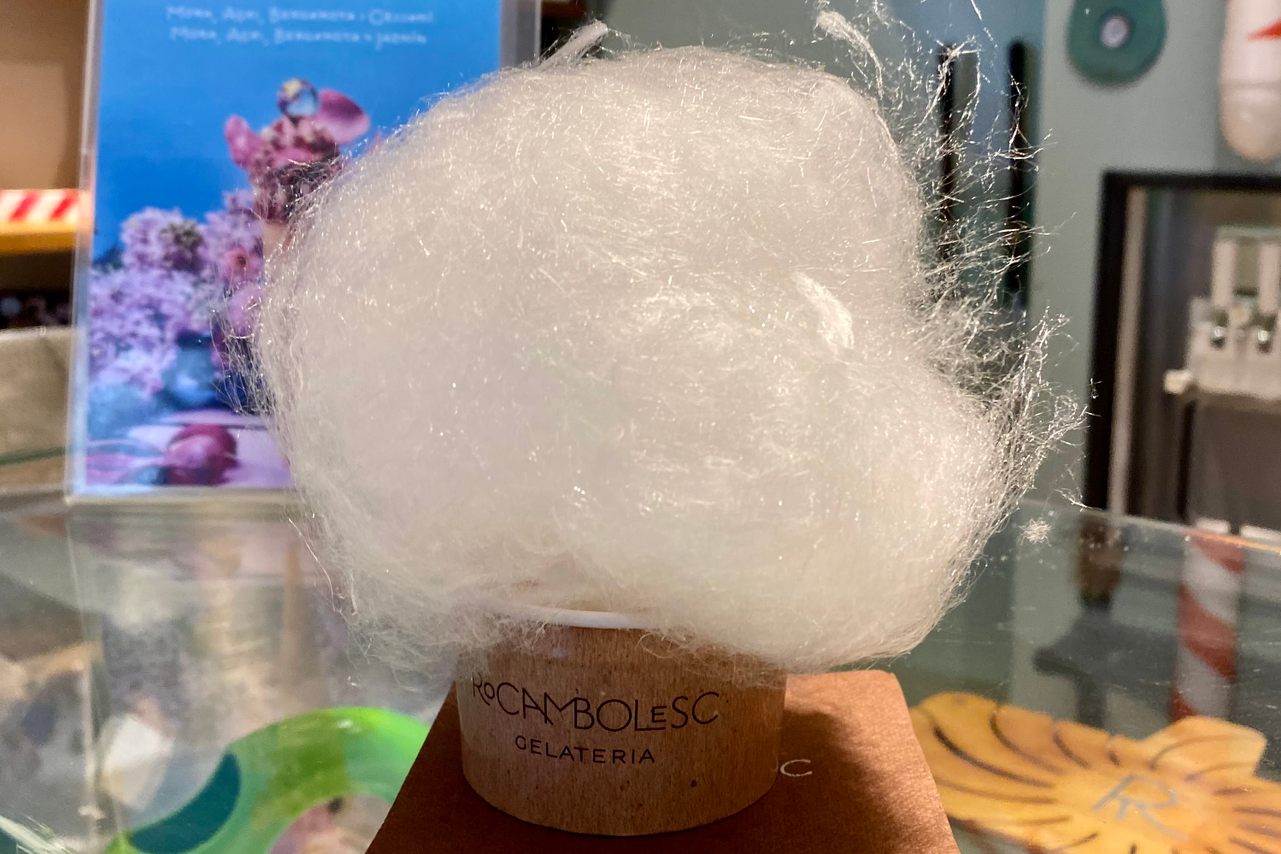
9. Girona Food Tours
Girona is a food lover’s fantasy. This city of just over 100,000 inhabitants has five Michelin-starred restaurants, a buzzy food market, and a fantastic selection of family-run eateries serving market-fresh cuisine.
Girona also has a host of other marvels, including one of Europe’s best-preserved medieval centers, a cathedral that starred in Games of Thrones, and a world-renowned flower festival. But food is ultimately its biggest draw—after all, it’s hard to compete with El Celler de Can Roca, twice named the best restaurant in the world. This fine-dining temple, run by three brothers— chef Joan, sommelier Josep, and pastry chef Jordi—offers a magnificent tasting menu consisting of 15 starters, 12 dishes and three desserts.
Venture into Girona’s covered food market on a delicious 3.5-hour culinary adventure with Girona Food Tours. Sample regional delicacies like esqueixada (shredded salt cod, tomato, and onion salad), escalivada (smoky grilled vegetables), and anchovies; sip cava and sweet ratafia liqueur, and taste all the local tapas, including the famous pa amb tomàquet (tomato bread). The grand finale is a visit to Rocambolesc, Jordi Roca’s candy-striped sweets emporium, where you can eat ice cream from a warm panet, or brioche bun.
Carrer del Nord, 6, 17001 Girona, Spain
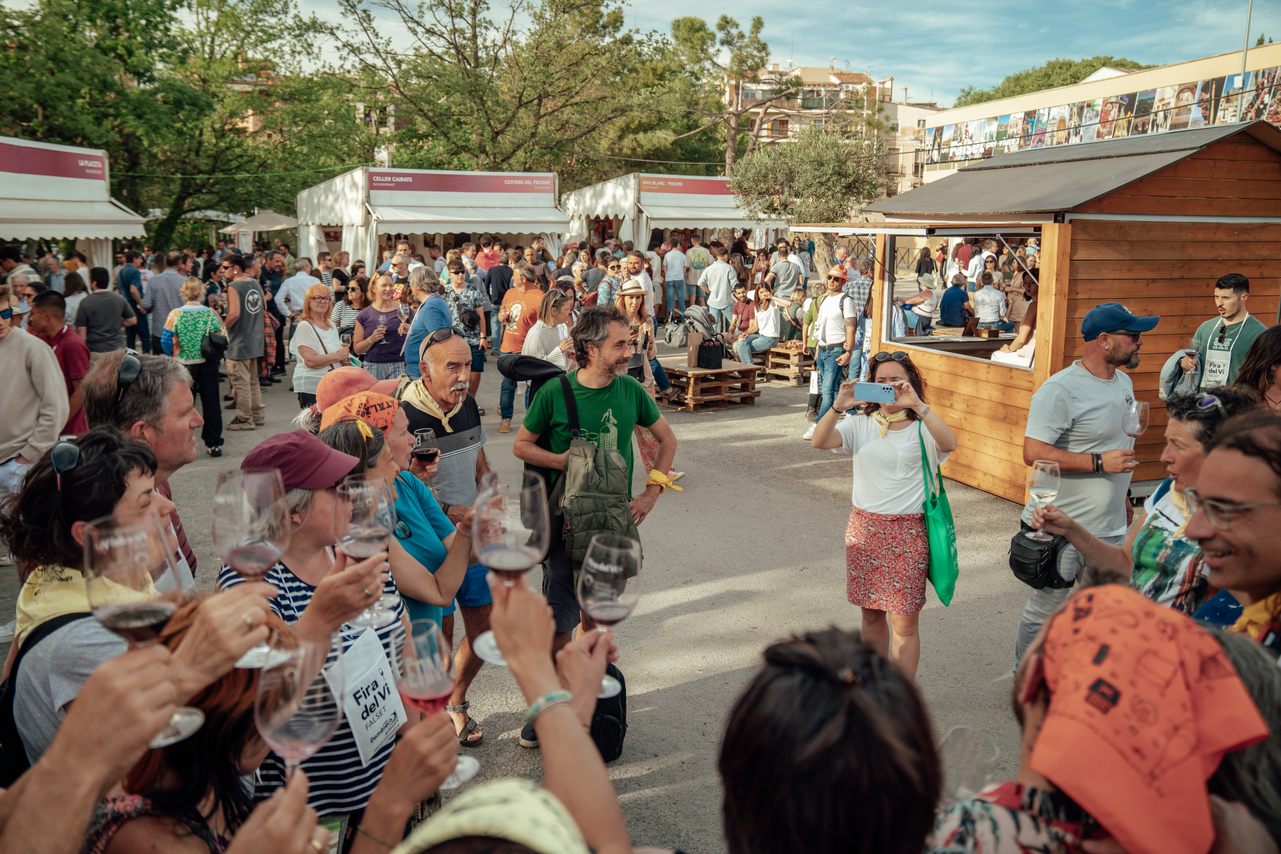
10. Falset Wine Fair
Of Catalonia’s 12 designations of origin (also known as D.O.s or wine regions), none is more premium than Priorat. So much so that its full-bodied reds fetch prices that would make most Spanish wine producers blush.
Two hours inland from Barcelona, Priorat awaits with its ultra-prestigious Denominació d’Origen Qualificada (D.O.Q.) wines. But as recently as the 1970s, commercial wine production in Priorat all but ceased. The region’s wine culture was revived in the 1980s and ’90s by a visionary group of friends led by winemaker René Barbier. The rest, as they say, is history.
Priorat’s annual calendar is packed with fairs, festivals, and exhibitions dedicated to celebrating food and wine – not to mention providing a great excuse for a party. At the epicenter of Priorat wine production is the small town of Falset, which hosts an annual wine fair dedicated to promoting the two local denominations, D.O.Q. Priorat and D.O. Montsant. Visitors can experience wine tastings, vineyard visits, conferences, and wine tasting courses, and gain a rare insight into this fascinating region.
43730 Falset, Tarragona, Spain
11.
Sponsored by Catalunya. Explore more here!

